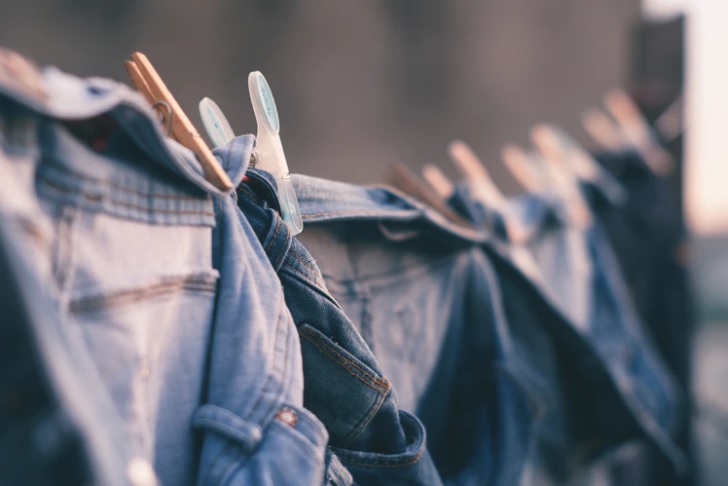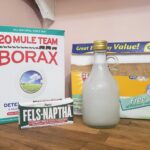
No, You Don’t Actually Need Fabric Softener
- Thomas Nelson
- December 20, 2020
- Sustainable Living
- 0 Comments
I’m someone who appreciates comfortable clothes. I like them roomy, soft, and relaxing. Many people turn to fabric softener in an attempt to keep their clothes smelling fresh and feeling nice and soft, but do we actually need fabric softener to keep our clothes soft?
What does fabric softener do?
Fabric softener is a laundry product designed to enhance the feel, appearance, and overall quality of your clothes and other laundered items. It primarily serves the following purposes:
- Softening: As the name suggests, the primary function of fabric softener is to make fabrics feel softer and smoother to the touch. This is especially beneficial for items like towels, bed linens, and clothing, as it can improve comfort and reduce the stiffness of fabrics after washing.
- Reducing Static Cling: Fabric softeners help prevent static electricity buildup in your laundry. This reduces the likelihood of clothing sticking together or clinging to your body, which can be particularly annoying in dry or low-humidity conditions.
- Enhancing Fragrance: Many fabric softeners come in various scents, and they can add a pleasant fragrance to your laundry. This leaves your clothes smelling fresh and clean after each wash.
- Reducing Wrinkling: Fabric softeners can help reduce wrinkles in clothing and fabrics, making ironing or steaming easier and less time-consuming.
- Preserving Fabric Quality: By reducing friction between fibers, fabric softeners can extend the life of your clothes and linens. This can help prevent excessive wear and tear, pilling, and fiber breakage.
- Enhancing the Appearance of Clothes: Softened fabrics often look smoother and more vibrant, which can improve the overall appearance of your clothing.
It’s important to note that while fabric softeners offer these benefits, they are not suitable for all fabrics. Some types of fabrics, such as microfiber and certain athletic or moisture-wicking materials, may not react well to fabric softeners and can lose their performance properties if treated with them. Additionally, some people may be sensitive to the fragrances or chemicals used in fabric softeners, so it’s a good idea to choose hypoallergenic or fragrance-free options if you have allergies or sensitivities.
How fabric softener harms wildlife
Fabric softeners can be harmful to wildlife primarily through water pollution and chemical exposure. Here’s how fabric softeners can negatively impact the environment and wildlife:
- Water Pollution: When you use fabric softeners in your laundry, the chemicals they contain can be washed out of your clothes during the rinse cycle and enter wastewater. These chemicals are then discharged into rivers, lakes, and oceans through sewage systems or wastewater treatment plants. The presence of fabric softener chemicals in aquatic environments can have several harmful effects:
- Toxicity: Some chemicals in fabric softeners can be toxic to aquatic organisms like fish, invertebrates, and algae. Even at low concentrations, these chemicals can disrupt the normal functioning of aquatic ecosystems, harming or killing organisms.
- Altered Water Chemistry: Fabric softener chemicals can alter the pH and chemical composition of water, affecting the health of aquatic ecosystems. Changes in water chemistry can disrupt the reproductive cycles of aquatic life and damage sensitive habitats like coral reefs.
- Bioaccumulation: Chemicals from fabric softeners can enter the food chain. Small aquatic organisms may absorb these chemicals, and when larger predators eat these organisms, the chemicals can accumulate in their tissues over time. This process, known as bioaccumulation, can lead to higher concentrations of harmful substances in higher trophic levels of the food chain, potentially affecting larger and more vulnerable species.
- Habitat Disruption: The release of chemicals from fabric softeners into aquatic environments can disrupt the natural habitats of wildlife. For example, changes in water quality can harm sensitive aquatic plants and organisms, leading to habitat loss and reduced biodiversity.
- Microplastics: Some fabric softeners contain microplastics, which are tiny plastic particles that can shed from clothing during washing. These microplastics can be mistaken for food by aquatic organisms, leading to ingestion and potential harm to wildlife. Additionally, the presence of microplastics in aquatic ecosystems can have long-term ecological consequences.
It’s important to note that while fabric softeners contribute to water pollution and chemical exposure, their overall impact depends on factors such as the specific chemicals used, their concentrations, and the local environment. To reduce the potential harm to wildlife and aquatic ecosystems, using eco-friendly fabric softeners, reducing usage, and properly disposing of chemical products are recommended practices. Additionally, supporting efforts to improve wastewater treatment processes can help mitigate the environmental impact of household products like fabric softeners.
Environmental impact of fabric softener
Fabric softeners, like many household products, have environmental impacts that should be considered. Here are some of the environmental concerns associated with fabric softeners:
- Chemical Ingredients: Fabric softeners often contain a range of chemicals, including surfactants, emulsifiers, fragrances, and preservatives. Some of these chemicals can be harmful to aquatic life if they make their way into water systems through wastewater. Additionally, the production and disposal of these chemicals can contribute to air and water pollution.
- Water Pollution: When you use fabric softeners in your laundry, the chemicals can wash out of your clothes and into wastewater. These chemicals can be difficult to remove through wastewater treatment processes, potentially leading to water pollution. This pollution can harm aquatic ecosystems and disrupt the balance of natural habitats.
- Packaging: Like many consumer products, fabric softeners come in plastic containers, contributing to plastic waste. The production, transportation, and disposal of these containers can have negative environmental impacts, especially if they are not recycled properly.
- Energy Consumption: The production and transportation of fabric softeners require energy, contributing to greenhouse gas emissions and climate change. Additionally, using fabric softeners in your laundry may require additional energy for longer drying times, as softened fabrics can retain more water.
- Microplastics: Some fabric softeners contain microplastics, which are tiny plastic particles that can shed from clothes during washing. These microplastics can end up in waterways and have potential ecological consequences.
- Health Concerns: Some of the chemicals used in fabric softeners may pose health risks to humans. While the concentrations in fabric softeners are generally low, their long-term effects on human health and the environment are still being studied.
Fabric softening products often contain potentially harmful ingredients too, like palm oil, petroleum-based chemicals, and animal fats. That’s right, your fabric softener probably isn’t vegan. If it contains tallow dimethyl ammonium chloride, that’s pretty much just fancy science talk for rendered animal fat mixed with ammonia. Do you want to spread that all over your clothes? Yikes.
How to naturally soften clothes
I’ve established already that I am a man who appreciates comfort. Even as I type this, I’m wearing a nice, thick sweater and fuzzy pants. Even at work, comfort comes first.
Earlier in this article I mentioned that many commercial detergent brands already contain softening agents, but I don’t actually use any of them. I make my own laundry soap out of three cheap ingredients. So I’ve had to do some research on naturally softening my clothes. I’ve found two things work:
Vinegar
White distilled vinegar seems to help keep my clothes soft. I just add a splash of it to the fabric softener dispenser in my washing machine. The internet suggests using a quarter cup but I’m pretty imprecise. I just kind of dump some in and let God sort it out.
The great thing about white vinegar is that it is odorless when dry, so your clothes don’t wind up smelling like vinegar at all.
Dryer balls
Dryer balls are another option. Dryer balls work by fluffing your clothes as they dry, increasing their softness and reducing static cling.
There are a few different types of dryer balls on the market, and each has its pros and cons. There are wool dryer balls that are technically eco friendly but they don’t qualify as being an ethical, vegan product because they are made from an animal product. There’s some hot debate about whether or not sheep wool is unethical, but I don’t care to weigh in on that. Wool dryer balls are an option, your call one way or the other.
There are also cotton dryer balls that serve a similar purpose, but I have not ever tested a cotton dryer ball before so I can’t vouch for their effectiveness.
There are also plastic dryer balls. I have used these, they seem fine, but these days, I avoid plastic to the best of my abilities.
So do you really need fabric softener?
In short: no. They are a redundant product, not eco-friendly, not vegan, and there are better, less expensive, and natural ways to soften your clothes.
Try next: Easy DIY Laundry Detergent That Costs $.40 Per Gallon

